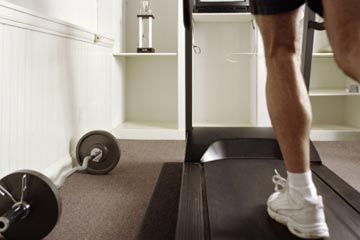Long gone are the days that strength training was associated only with bodybuilding. The idea of buff, macho men "maxing out" on free weights has been replaced with health nuts from all walks of life lifting weights to stay fit. Today strength training is linked to improved overall health. From helping your heart and lungs to increasing muscle mass, strength training is your body's fountain of youth.
These improvements appear in all age groups, from teenagers to the elderly, though the most expansive research has been done on older adults. A large-scale study at Tufts University found regular strength training just two days per week led to a 70 percent increase in general strength and 13 percent increase in balance in postmenopausal women. Spine and hip density increased an entire percentage point [source: Journal of the American Health Association].
Advertisement
Statistics like these move individuals across the spectrum to slim down, tone up and decrease the likelihood of chronic disease through strength training.
The all-encompassing benefits of gaining strength include improving your mental capacity, as well, because it relieves stress. Stress weakens your health, and as stress decreases, sleep quality increases. Without stress, you'll probably sleep deeper and longer than you did before.
But in a country where heart disease ranks as the No. 1 cause of death, and lung cancer is the second most diagnosed cancer, it's strength training's effects on cardiovascular and lung health that perk peoples' ears [sources: Centers for Disease Control, American Lung Association]. More and more studies tell us what many weightlifting addicts already know: Increasing muscle mass means improving heart and lung function while staving off heart disease and other conditions before they set in.
Read on to learn what the American Heart Association thinks about strength training.
Advertisement




